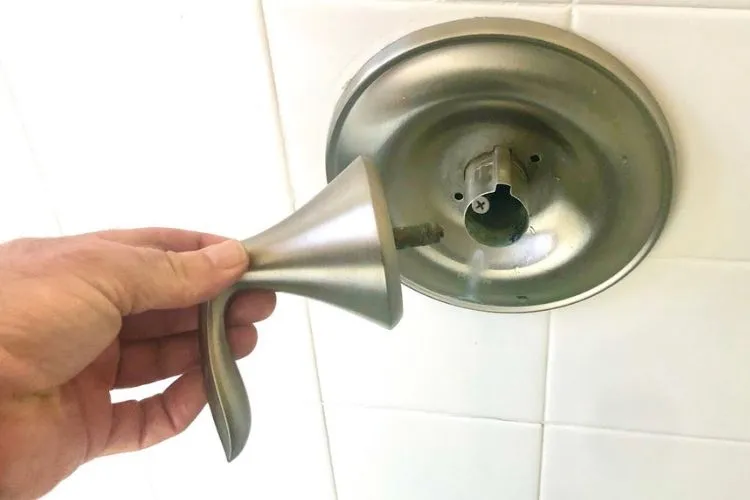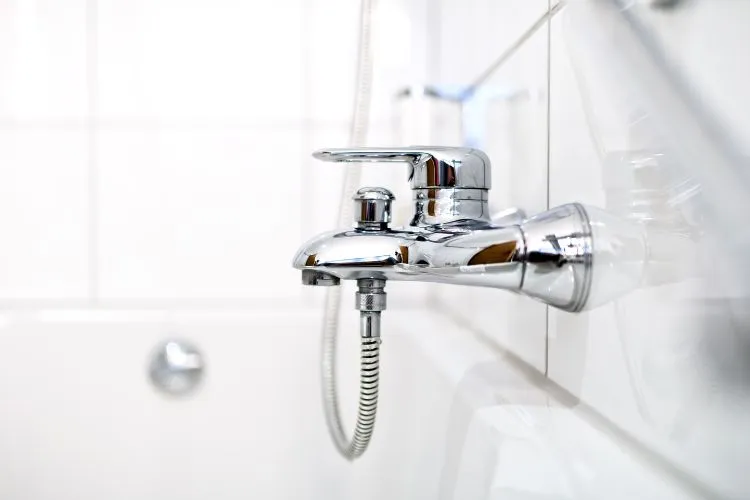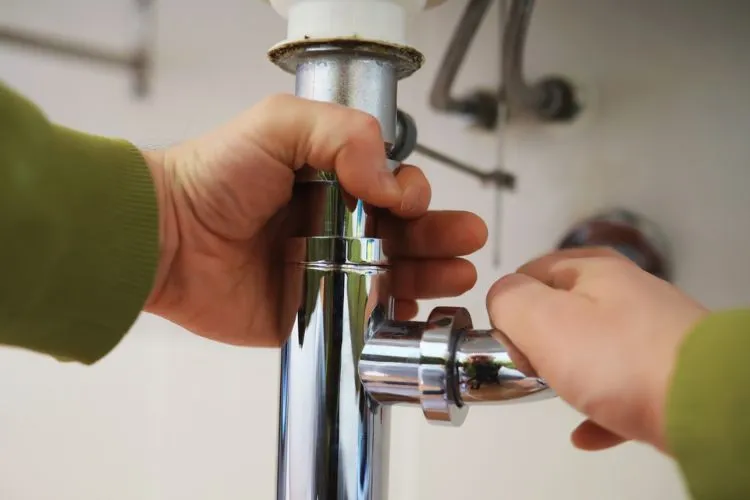Dealing with a broken shower handle can be a tricky situation. It’s a common household problem that can lead to unnecessary water wastage and an inflated water bill if not addressed promptly.
Knowing how to effectively manage this issue is essential for any homeowner. This guide outlines the necessary steps to turn off shower with broken handle safely in an easy to understand manner.

How To Turn Off Shower With Broken Handle?
The moment you realize your shower handle is broken, the primary concern is to reduce water waste. The environmental impact and added cost of leaking water are significant.
While finding a permanent solution, a temporary measure can be putting a stopper or cloth to reduce the water flow, albeit slightly.
Locating Your Water Shut-off Valve
The next critical step is to find your water’s shut-off valve. Homes typically have a main shut-off valve and localized valves for different areas. The main shut-off valve is usually located near the water meter.
Turning it off will stop the water flow to the entire house, which is not ideal but necessary in emergencies. Localized shut-off valves are often found near fixtures and should be your first check. Knowing the location of these valves beforehand can save time in such situations.
Alternative Methods for Shower Shut-off
If the shower continues to run due to a broken handle, using pliers or a wrench to manually turn off the valve can be a quick fix. This method requires some caution. You should wrap the jaws of the pliers with tape to prevent damaging the valve.
Gently turn the valve clockwise to close it. This stop-gap solution is useful for preventing water waste until a more permanent fix is applied.
Temporary Fixes for Broken Handles
For those who are handy, a temporary fix for a broken shower handle might suffice until professional repair can be sought. This might involve using universal handles or making adjustments to the existing setup to regain temporary control over the water flow.
However, remember, these are short-term solutions. Seeking professional help is advisable for a permanent fix.

Preventive Measures
Preventing such emergencies requires regular maintenance. Inspecting your shower handles and other plumbing fixtures periodically for signs of wear and tear can help avert sudden breakdowns.
Replacing parts at the first sign of damage, rather than waiting for a complete failure, is a good practice.
Pro Tips
Experts in plumbing always stress the importance of quality hardware. Opting for durable and reputable brands for shower handles and other plumbing fixtures can reduce the likelihood of unexpected failures.
Additionally, familiarizing yourself with your home’s plumbing layout, including the location of shut-off valves, can make handling emergencies much simpler.
Understanding Shower Valve Types
Selecting the appropriate method for shutting off your shower depends on knowing which type of valve system you have installed. Pressure balancing valves are common in homes and designed to maintain a consistent water temperature despite fluctuations in hot or cold water supply.
If the pressure drops on one side, the valve adjusts to keep the temperature steady, which is crucial for avoiding scalds during a shower.
Thermostatic valves, on the other hand, have an advantage in precision temperature control. They maintain your set water temperature, regardless of changes in the water supply or pressure, and they have a separate control for water flow.
Thus, knowing your valve type is essential as thermostatic valves might require handling both temperature control and flow control to completely shut off the water.
Lastly, diverter valves are used to direct water to different shower outputs, such as the main showerhead, a handheld sprayer, or body jets.
While not directly related to switching off water flow, it’s helpful to understand a diverter’s role, particularly in setups where you might have a combination of valve types.
Being familiar with the specific valve type you have informs you whether you need to just shut off flow or adjust temperature controls as well when managing a broken handle situation.
Importance of Regular Plumbing Checkups
Regular plumbing checkups by professionals are crucial for maintaining a home’s plumbing health and preventing unexpected disasters.
Such inspections help in early detection of potential issues such as leaks, corrosion, or blockages that, if left unattended, can lead to severe water damage and costly repairs.

A professional plumber can spot wear and tear on valves, seals, and other components that might not be evident to the untrained eye. This proactive approach not only ensures that your plumbing system remains efficient but also extends the lifespan of your fixtures and pipes.
Additionally, regular maintenance can improve water quality by identifying risks of contamination due to corroded pipes.
In summary, investing in regular plumbing checkups is a preventative measure that safeguards against sudden failures, helps conserve water, protects your property from damage, and can save money in the long run by avoiding expensive emergency repairs.
Frequently Asked Questions (FAQs)
How can I prevent my shower handle from breaking in the future?
Regular maintenance and opting for high-quality fixtures can substantially lower the risk of breakage. Also, gentle use of shower handles can prevent undue stress on the components.
Is it expensive to replace a shower handle?
The cost can vary based on the model and make of the shower handle. While some might be affordable, opting for higher quality, even if slightly more expensive, can be cost-effective in the long run.
How long can I use temporary fixes before getting a professional repair?
It’s advisable to seek professional help as soon as possible. Temporary fixes are just that—temporary. They can prevent immediate water waste but might not hold up well or could lead to further damage.
Conclusion:
A broken shower handle doesn’t have to be a cause for panic. By following these steps, you can manage the situation effectively while minimizing water waste.
Remember, while temporary fixes can be helpful, seeking professional repair or replacement for a broken handle is the best long-term solution.
Keep this guide handy, and the next time you face a shower handle issue, you’ll be well-equipped to deal with it confidently.


